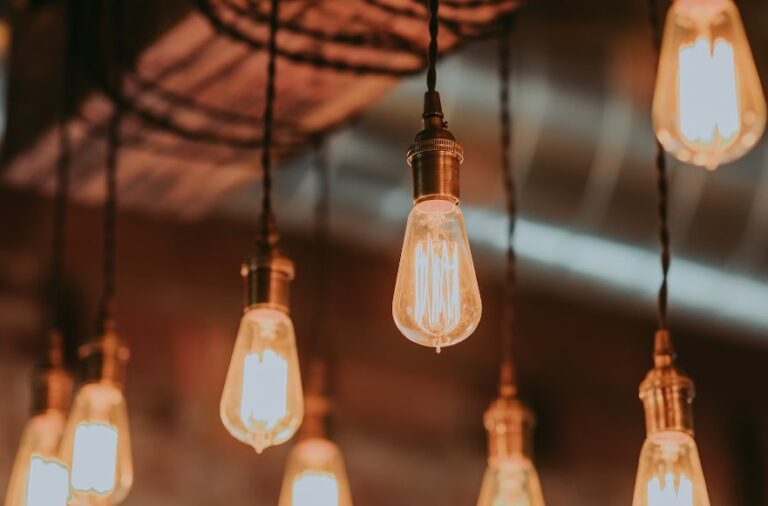Light plays an important part in everyday life. Vision is only possible with light. LED and CFL bulbs are a medium of light which are being used everywhere. Environment concerns are persistent regarding the application of electronic devices, and light bulbs are no exception.
Energy-efficient lighting includes bulbs which are made from a technology called electronic chokes, which turn off by default when it is not in use. Compared to conventional lighting devices, these bulbs help reduce energy consumption.
Both CFL and LED are energy-efficient lights but use different mechanisms to function. CFL usually imbibes fluorescence for manufacturing the light, and LED typically makes use of semiconductor diodes to induce the light. The blog is all about diving in depth into these electronic devices:
Table of Contents
CFL lights
Compact Fluorescent Lamp, shortly termed CFL, are known for their energy efficiency. The way a CFL bulb works is quite fascinating to know.
CFL has an electric current that goes down the argon tube, which contains a bit of mercury vapour to produce visible light. This process results in the generation of UV light that induces phosphor to emit the light.
- The energy efficiency of CFL lights: Interesting fact, CFL bulbs garnered appreciation for being 25-35% energy effective. These bulbs performed better than the conventional bulbs. However, CFLs constantly release about 80% heat, which is far more in quantity compared to the LED bulbs;
- Environmental impact: As previously stated, CFL bulbs are often the desirable lot to increase the chances of sustainability. They help in reducing carbon emissions by saving more energy.
Pros and cons of CFL lights
Like any other Light Bulb, CFL has many Advantages and Disadvantages. Here are some of them:
Pros:
- Energy effective: CFL lights are extremely efficient in comparison to traditional bulbs. They possess the potential to consume 75% less energy than their conventional counterparts;
- Economical: In the long run, CFL bulbs help save a lot of costs due to their lower electricity consumption;
- Environmental friendly: As CFL bulbs are energy efficient, they help decrease the carbon emissions in the environment, thus contributing to sustainability factor.
Cons:
- Contains mercury: Mercury is an element that occupies a significant amount of CFL light and can be toxic. It is especially unhelpful during the time of disposing of these bulbs;
- Suitable only for short periods: CFL lights can’t be used for brief terms, and constantly switching them on and off may decrease the bulb’s life span;
- Lesser than LEDs: LEDs save more energy and emit less heat than CFLs.
Read more: Energy cooperatives: what are their advantages and disadvantages
LED lights
LEDs, also known as Light light-emitting diodes, make use of their semiconductor quality to generate light. To put it simply, when the electricity goes through a microchip, a light source gets illuminated. All this happens in seconds inside an LED bulb.
- Energy efficiency of LED lights: LEDs are comparatively better for energy savings compared to the CFLs bulbs. They help save up to 80% of energy, saving a large chunk of an electricity bill;
- Environmental Impact of LED lights: LED lights are positive for the environment, as they are made to consume less energy, come for a longer time, and help in decreasing light pollution.
Pros and cons of LED lights
LED lights possess some fascinating Pros and Cons one won’t want to miss, here are some of them:
Pros:
- Saves a lot of energy: House owners can save a lot on their electricity bill, as LEDs are considered to be 90% energy-effective compared to traditional bulbs;
- Sustainability: Unlike CFL, they do not possess mercury and other toxic elements that might cause harm to the surroundings;
- Durability: LED lights are known for their durability. They come for a long time. Unlike traditional bulbs, LED lights are built for long-term, stronger use.
Cons:
- Colour manipulation: These lights can change the observer’s perspective on colour in comparison to natural light;
- Uncharastically bright: LED lights are known to possess jarring light quality. However, this is changing as the technology advances;
- Expensive: Unlike traditional bulbs and even CFLs, LED lights come with costly options.
CFL VS LED: which is more energy efficient
In the sector of energy-efficient lighting, both CFLs and LEDs outshine their incandescent counterparts. Notably, LEDs emerge as the pinnacle of energy efficiency between the two.
Comparatively, LEDs boast approximately 75% greater efficiency than traditional incandescent bulbs, while CFLs trail slightly behind with a 25% increase in efficiency.
The scale tips decisively in favour of LEDs, not only in terms of energy efficiency but also in various other aspects when compared to CFLs.
| Factor | CFL | LED |
| Efficiency | CFL light bulbs usually come in 50-70w | LEDs come in 80-120 watts which makes them better for energy efficiency |
| Cost Comparison | Cheaper compared to LEDs, and costly in comparison to traditional lights. | Expensive |
| Energy and efficiency consumption | CFL consumes 15 watts | LEDs are considered to be more efficient as they use 6 to 8 watts |
| Life span and durability | Not suitable for short-term use | LED is more durable and sturdier |
| Light Quality and Colour Temperature | Chances of flickering. Colour temp varies from 2700k to 6500l | Does not flicker. Colour temp varies from 2700k to 6500k |
| Cost Comparison | Initial- Lower, Long term- Higher | Initial- Higher, Long term- Lower |
| Presence of Mercury | Yes | No |
Read more: The two renewable sources that will provide more than a third of all global energy












